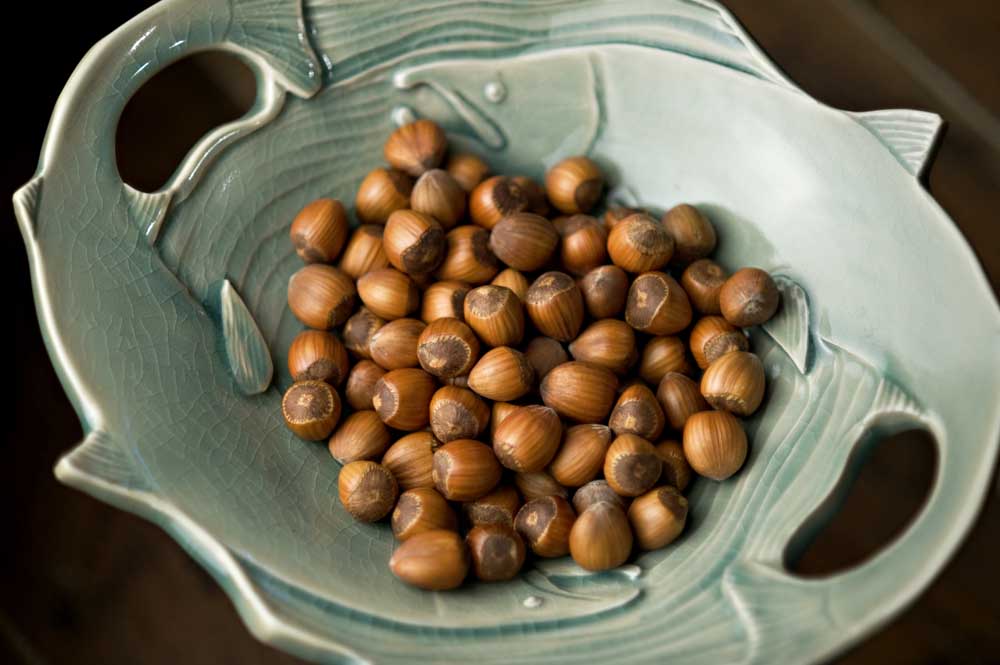Hazelnuts: a versatile Oregon-grown crop
Published 12:00 am Tuesday, November 1, 2016

- Karl Maasdam / For The BulletinAmong the treasures of Oregon’s Willamette Valley are orchards producing over 99 percent of the domestic hazelnut crop. Autumn is when the new crop of nuts find their way to market. So it’s time to double down on some wonderful ways to use them in your kitchen.
It was the summer of 1980, my last year of graduate school at Oregon State University. I was researching a paper on hazelnuts. Or, as they were called then, filberts. I discovered that Homer Twedt would be the farmer most likely to provide strong background material for my topic. He was one of the many growers in the area.
When I arrived at his north Corvallis farm, he asked me if I’d ever seen a filbert tree close up.
Trending
I hadn’t.
“Well let’s go for a ride, then,” he said.
I climbed up into his old Ford pick-up and off we went, windows down, a welcome breeze blowing orchard dust through the cab. It was late August and the fist-sized clusters of nuts had swollen to maturity, their grass-green husks punctuating the dimness around us.
As we bumped along between the rows of trees, the gnarled old branches were bending down to scrape the roof of the truck. Although a good 27 feet separated the trunks, a dusty-green canopy filtered the afternoon sun.
Somewhere toward the center of his orchard, Homer cut the engine. We sat in the stillness. In every direction, trees marched away in stately order, silent and strong. Deep in my bones I sensed that this place provided a level of peace and pride that I couldn’t begin to comprehend. Nor could I visualize how everything would change so drastically in just a few short weeks. Harvest was that close. And throughout the Willamette Valley, all the growers were readying their equipment. Bringing in the totes. Keeping an eye on the weather.
All I could do was sit there and enjoy the summer breeze and speculate on what it must be like to raise such a treasured crop.
Trending
Welcome to Oregon Hazelnut Country!
• Where 99.9 percent of the nation’s crop is grown.
• Where an internationally-renowned hazelnut breeding program has been in place at Oregon State University for decades.
• Where, at any given time the program’s plant breeder Dr. Shawn Mehlenbacher, is overseeing the progress of about 100 selections that are evaluated for their potential as new cultivars. Cultivars that will be even more disease-resistant than past candidates, while producing even more wonderful tasting, looking and cooperative nuts.
If you’ve never been lucky enough to experience one of the Willamette Valley’s many hazelnut orchards up close, then an inside peek will give you a general idea of how this marvelous crop progresses, from field to kitchen.
It begins in January when the trees bloom with tiny red flowers gleaning pollen from large yellow catkins. Trees leaf out in spring and the fruits mature over the summer, falling to the ground of their own accord from mid-September to early November, depending on the variety and weather conditions. Along the way the orchards are meticulously cared for and groomed. Once the nuts are on the ground, they are mechanically swept into long windrows, and then scooped up with a tractor-drawn harvester and poured into large totes. The totes are typically delivered to a “handler,” which is a business specializing in cleaning, drying, bleaching, grading, inspecting and packing whole and shelled nuts for distribution. Some handlers also roast kernels and even produce value-added products such as retail-packed nuts or confections.
A few farmers undertake the whole process from tree to retail, which takes a real love for the business. Here is how Kathy Beutler who farms near Salem describes it:
“First off, I am a city girl who moved to the farm about 15 years ago. My husband, Neil, and I have 60 acres of Casina hazelnuts, in addition to a cleaning and drying operation. Over the years, I have never tired of the cycles I see in the orchard. The catkins in January, with their yellow pollen, the small red blossoms hardly visible, the tingers of green as the leaves unfold in the spring. As summer progresses, nuts appear in tiny clusters and then suddenly there they are and the branches are bending to the land. As harvest approaches the nuts are turning brown and falling to the ground, but in the tree you see the green tight catkins for next year. As fall comes upon us, the nuts are swept up into tidy rows to be picked up by the harvester as the leaves on Casinas turn to yellow, gold and rust. Soon the leaves provide a colorful carpet for the orchard and the catkins for net year are hanging on bare branches ready to start the cycle again.”
Here are a few of my favorite tried-and-true ways to enjoy our local hazelnuts. The first recipe, Hot and Sugary Roasted Hazelnuts with Rosemary and Cayenne, is an awesome host/hostess gift, not to mention a unique and wonderful appetizer to put out during your holiday parties.
— Jan Roberts-Dominguez is a Corvallis food writer, artist, and author of “Oregon Hazelnut Country, the Food, the Drink, the Spirit,” and four other cookbooks. Readers can contact her by email at janrd@proaxis.com, or obtain additional recipes and food tips on her blog at www.janrd.com.








